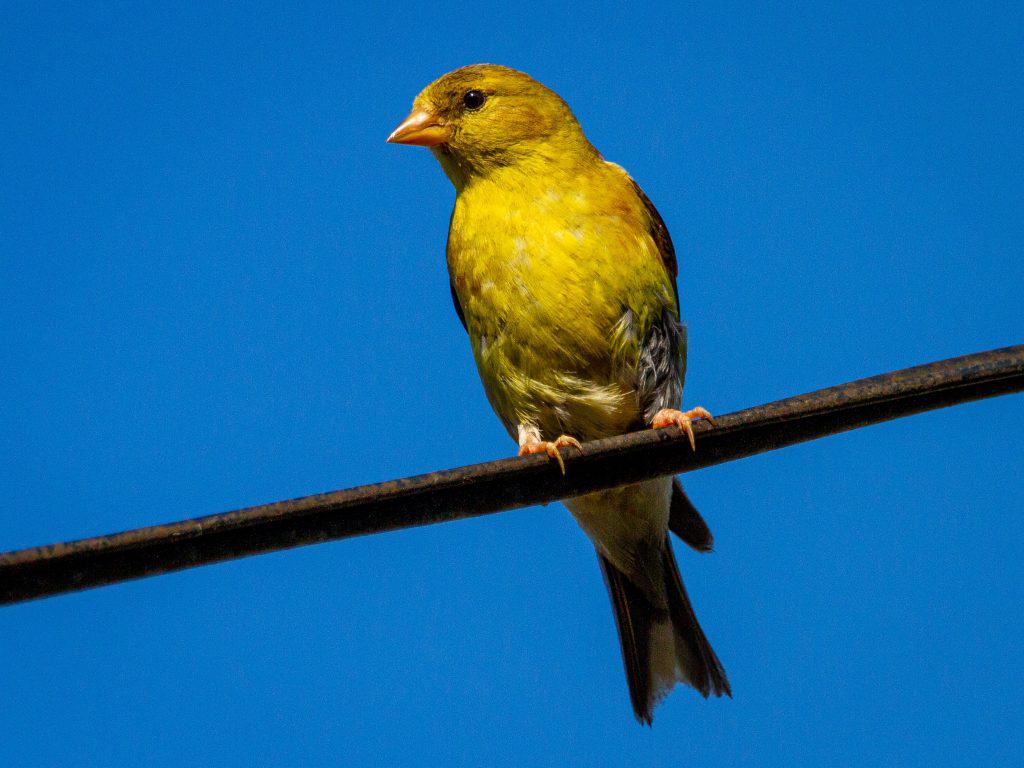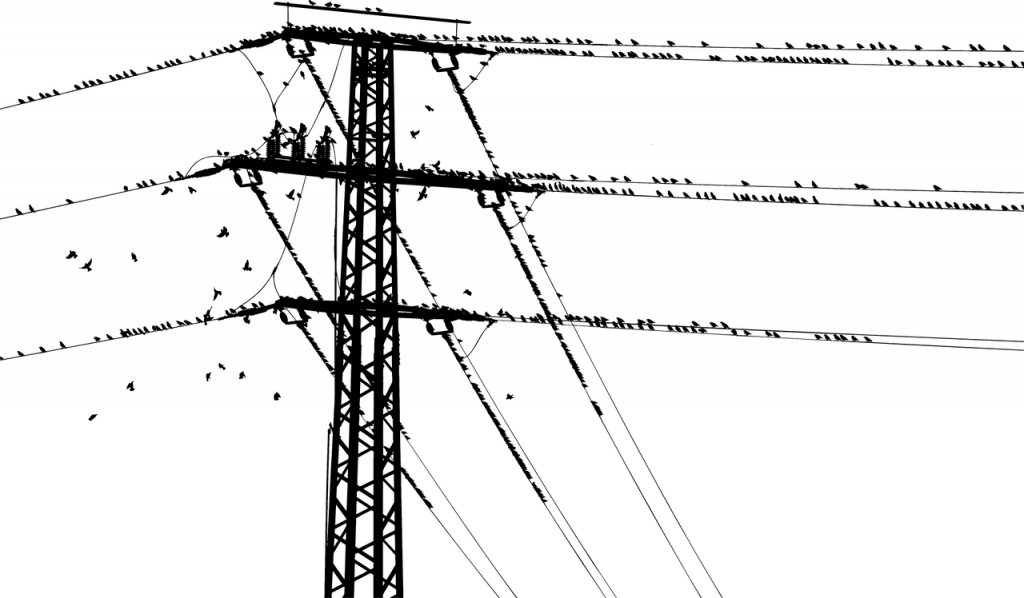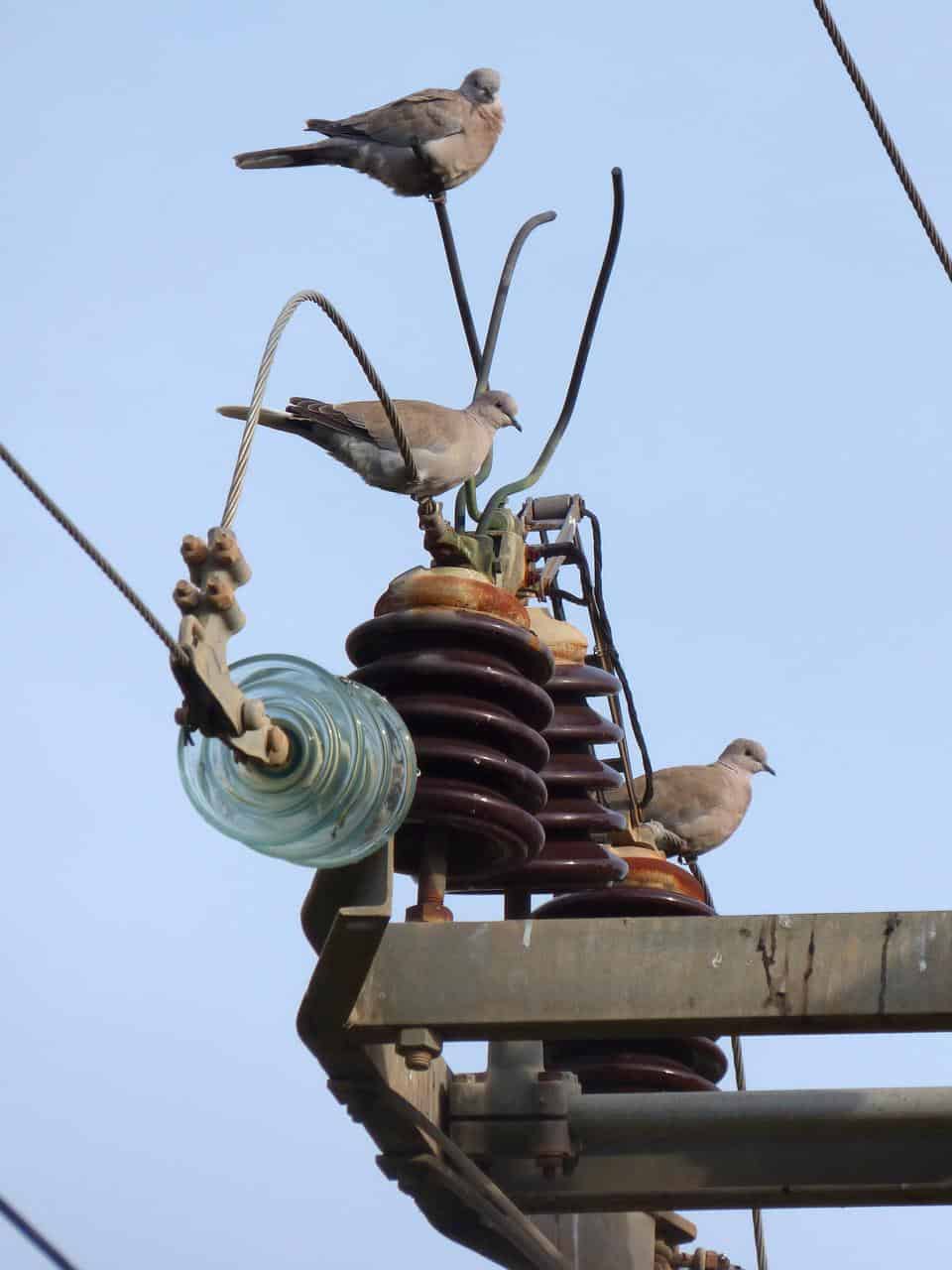Discover the reasons birds don’t get electrocuted while perched on powerlines and what actually happens while they’re up there.
Birds are notorious for perching on power lines. We’ve all seen them sitting in groups on the black cables, oblivious to their function.
Why do birds do this and how do they get away with it? The answer has to do with physics and the flow of electricity.
How Electricity Flows
Knowing the basics of how electricity works are crucial to understanding why birds don’t get electrocuted on power lines.
Moving electrons create an electrical current. That movement travels from power plants, through cables like power lines, and into devices like television.
The flowing current inside these wires has two forms: a negative charge and a positive one. The two forms alternate, as there aren’t two separate wires for positive and negative charges.
Grounding
Electricity will always want to travel toward the ground. The process of grounding paves an ideal route for electricity to reach the ground and discharge. The asphalt outside has a negative electrical charge, so electricity has the goal of traveling to it.
Grounding wires have the purpose of helping electricity connect to the negative charge below and discharge any excess. That’s why most electric systems will use a grounding wire. However, anything that is a good conductor of electricity and can help it reach the ground quickly will cause a discharge.
Electrical Conductors
Because we need moving electrons for electricity, good conductors of electricity are those that possess high electron mobility. The best electrical conductors include the following:
- Aluminum
- Brass
- Water
- Concrete
- Iron
- Mercury
What Happens When Birds Sit On Power Lines

Birds are not good conductors of electricity. Because they can reach power lines easily by flying, they don’t require anything that connects to the ground. You will never see a bird using a metal ladder to climb onto a power line.
When a bird lands on a power line, no current will flow through its body. Electricity will always follow the quickest, easiest path to the ground. Thus, it will bypass the bird and instead choose the metal wires to travel downward. In a single wire like a power line, electricity will travel in one direction.
Can Birds Be Electrocuted?
Are there circumstances where a bird could get electrocuted on a power line? While it’s safe for birds to perch on power lines, there are exceptions. If birds touch a different wire or another grounding object simultaneously, the current will go through them.
Some large birds, like hawks, may sometimes face the unfortunate fate of electrocution. This typically occurs when a grounding device is near enough to the power lines. A bird may ruffle its feathers against it accidentally when landing on the power cables.
The same is true for humans or other animals. Anything connected to the body that helps electricity achieve grounding presents a danger. That’s why it’s more common to see people become electrocuted than birds. As humans, we need to use a device to connect us from the ground to high areas like power lines.
Why Birds Sit On Power Lines

There are several reasons these feathered creatures like to perch on power lines. The cables are at a convenient height and offer them many advantages.
A Better View
One of the main reasons birds like to sit on power lines is because they will have a better view of everything. From the altitude a power line offers, birds can keep an eye on their nests, potential food sources, and predators.
Safety
Staying high means avoiding predators. Birds feel safe on power lines because they’re high up like treetops, but without obstruction to their view. Power lines don’t have leaves or branches, making them convenient places for birds to get away from things that might eat them.
Warmth
You may have noticed that birds flock to power lines in specific weather or temperature. That’s because their bodies benefit from the heat on the wires that help them stay warm.
Migration
Migratory birds love using power lines as meeting places. It’s not uncommon to see large numbers of birds huddle on power lines before taking off on a long travel journey before migration.
Power Lines and Storms
Why do birds sit on power lines before storms? It’s interesting to observe birds’ behavior changes when a storm is coming.
Like many animals, birds are sensitive to pressure falling or rising. They also have heightened senses and are keenly aware of any atmospheric changes.
One of the first things avid bird watchers will notice when a storm approaches is that birds go silent. In contrast, when the weather is improving, they will chirp or sing. This change is due to birds paying closer attention to their surroundings.
Most birds will try to avoid the uncomfortable feeling of falling pressure when a storm is near. You might see them fly lower to the ground when they sense a storm. Thus, it may seem counterintuitive for birds to perch on power lines before a storm. However, the reason birds sit on power lines in these times is to prepare for the coming weather.
The power lines offer birds a high vantage point from which they can see food sources, potential shelters, and see predators. They may also want to view a safe location to travel to or keep an eye on their nests.
Takeaways
Birds adore power lines because they provide many advantages. They’re convenient places to meet, stay safe, see the world, and keep warm.
Electricity flows through power lines and into the ground to other sources. To reach the ground, electricity must have a good conductor. Because birds’ bodies are poor conductors of electricity, they can happily perch on the cables without being electrocuted.
Unfortunately for many birds, there are exceptions to the rule. Any time a bird touches a conductor (or a separate wire with a different voltage) simultaneously as a power line, the current can flow through it. However, as long as birds avoid touching any grounding sources, it’s generally safe for them to sit on power lines.


